Disposable tumblers encourage coffee lovers to spend time in the open air or enjoy the favourite morning drink on the way to the office. However, the problem with single-use paper cups is serious and we are all aware of their huge environmental impact. Billions cups are used – and thrown out – every year.

Besides, papermaking is a environmentally unfriendly process: disposable cups are rarely made with recycled fibers, which means that more pulpwood forests get cut down. Most of them have a plastic lining and come in the form of mixed material, which prevents the ability to recycle. Product designers develop sustainable alternatives to conventional single-use coffee cups seeking for the positive social change and promoting more environmentally friendly consumer behavior.
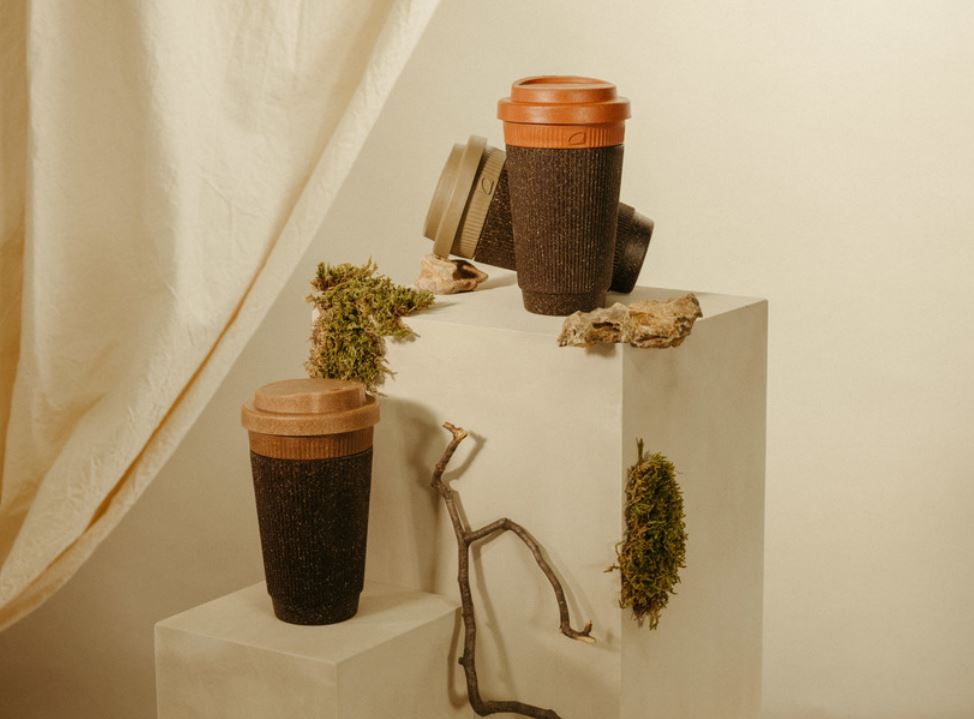
Weducer Cups by Kaffeeform
We have already written about a sustainable material that combines waste coffee grounds with natural glues developed by Berlin-based Kaffeeform’s founder Julian Lechner. Dishwasher safe and longlasting, it makes a good alternative to conventional drinkware.
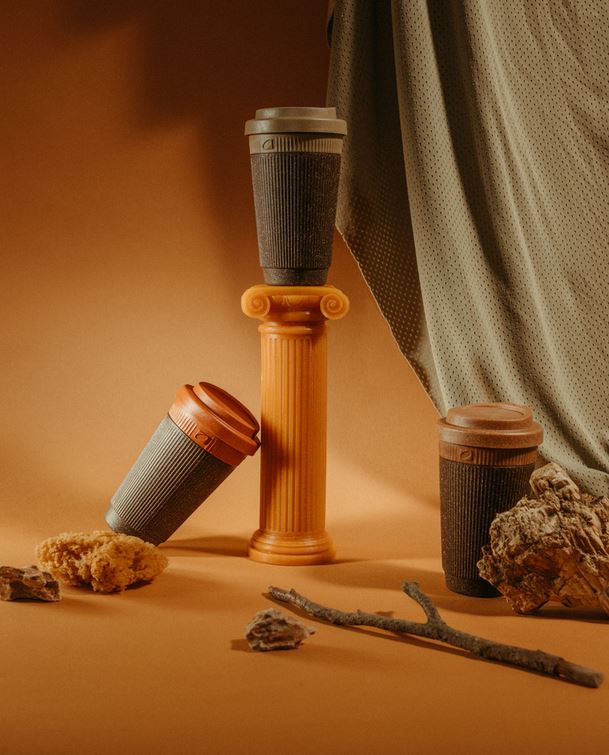
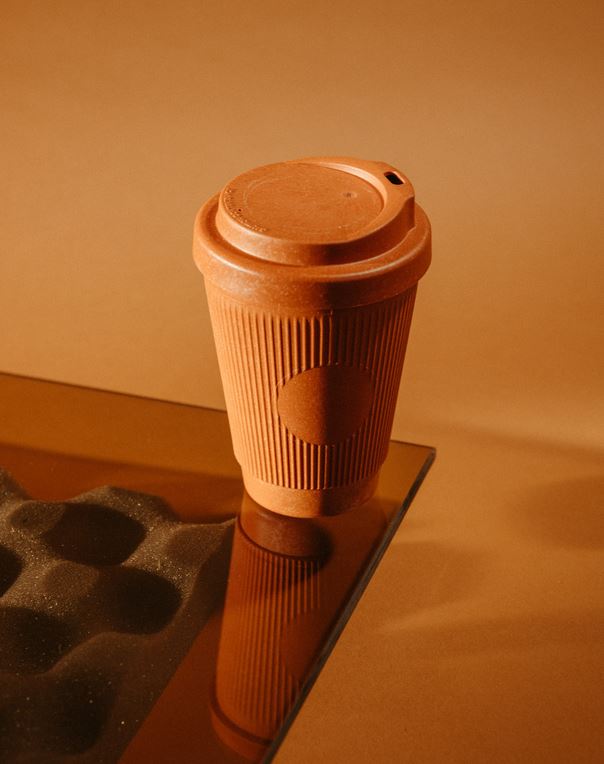
Weducer Cups by Kaffeeform
Three years after its successful launch, the company added two more tumblers into the range. The Weducer Cup Essential one is designed as a ‘caffeine-free’ cup made from a bio-based material with recycled wood fibers. The Weducer Cup Refined is slightly taller and is crafted of the company’s iconic recycled coffee ground material with a colorful inner layer and a drinking lid made from the same innovative wood-fiber composition used for the smaller cup. Both boast a pleasingly grippy matte, marble-inspired exterior.
Wood fibers composition was chosen by the company to broaden the possibilities of the product. Since it does not have coffee aroma, it can be used for any hot and cold drinks beyond coffee.
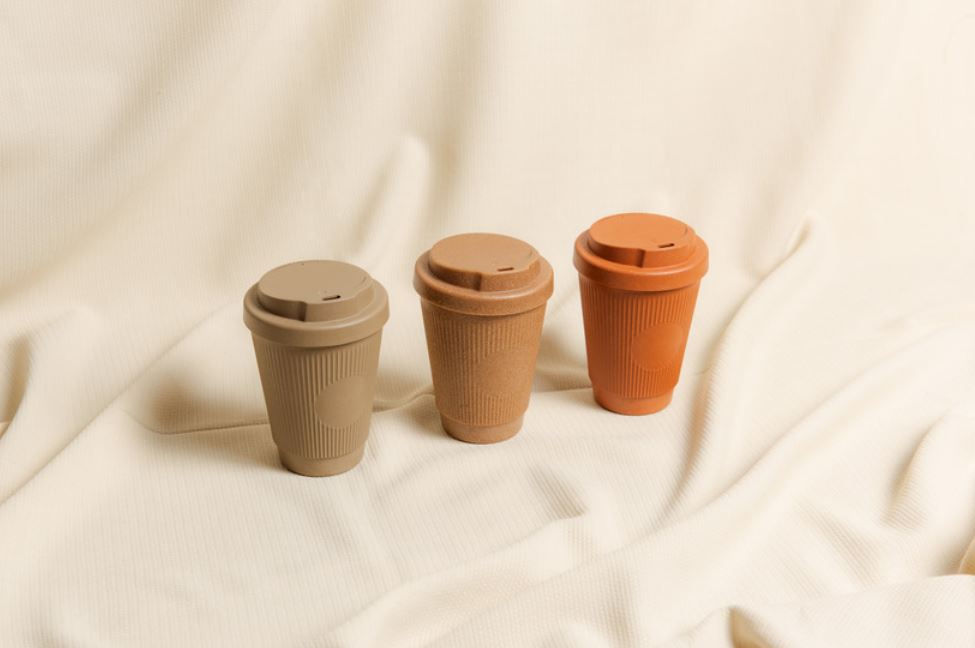
Weducer Cups by Kaffeeform
The Weducer Cup Essential is available in three new hues inspired by nature and named after spices – cardamom, nutmeg and cayenne, – while the premium model sports the color combination of the two materials it is made from: coffee/cardamom, coffee/nutmeg, and coffee/cayenne.
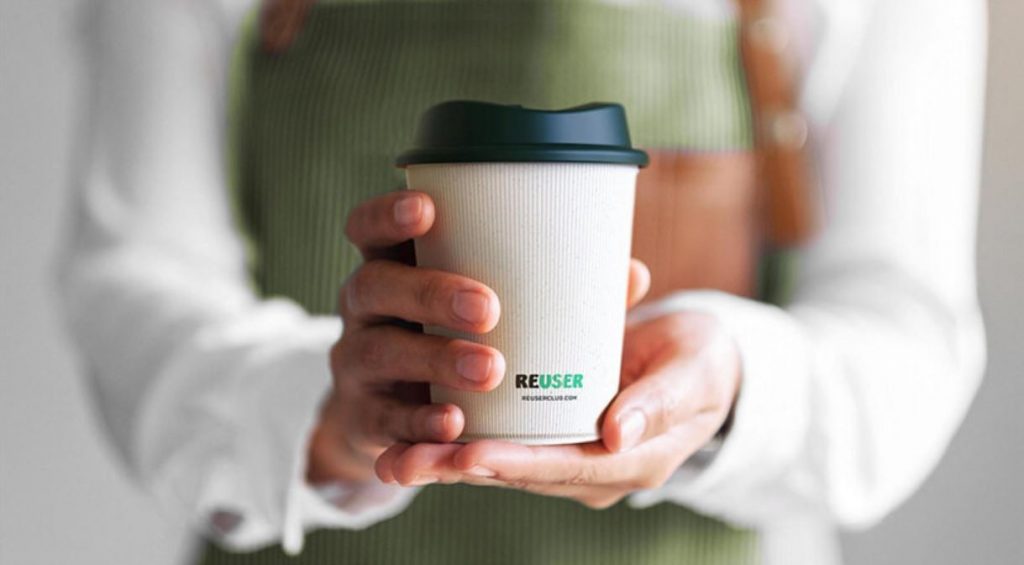
The Reuser project
UK-based circular system Reuser is targeting the removal of all single waste packaging via implementing an end-to-end system and transitioning away from our single-use culture to a reusable culture. The Reuser team collaborated with product design agency IDC and Brighton-based injection molding firm Naiad Plastics to develop a reusable coffee cup injection-moulded from pellets of a bio-plastic that combines a crop bi-product, algae, or used vegetable oil.

The Reuser project
The project’s partnering sites in London facilitate the uptake of a ‘reusable’ approach instead of distributing single-use cups. They act as drop-off locations that will clean cups and lids before putting them back into circulation. After a cup eventually reaches the end of its life, mechanical and chemical recycling ensures it can re-enter the production process from the beginning in the form of feedstock.
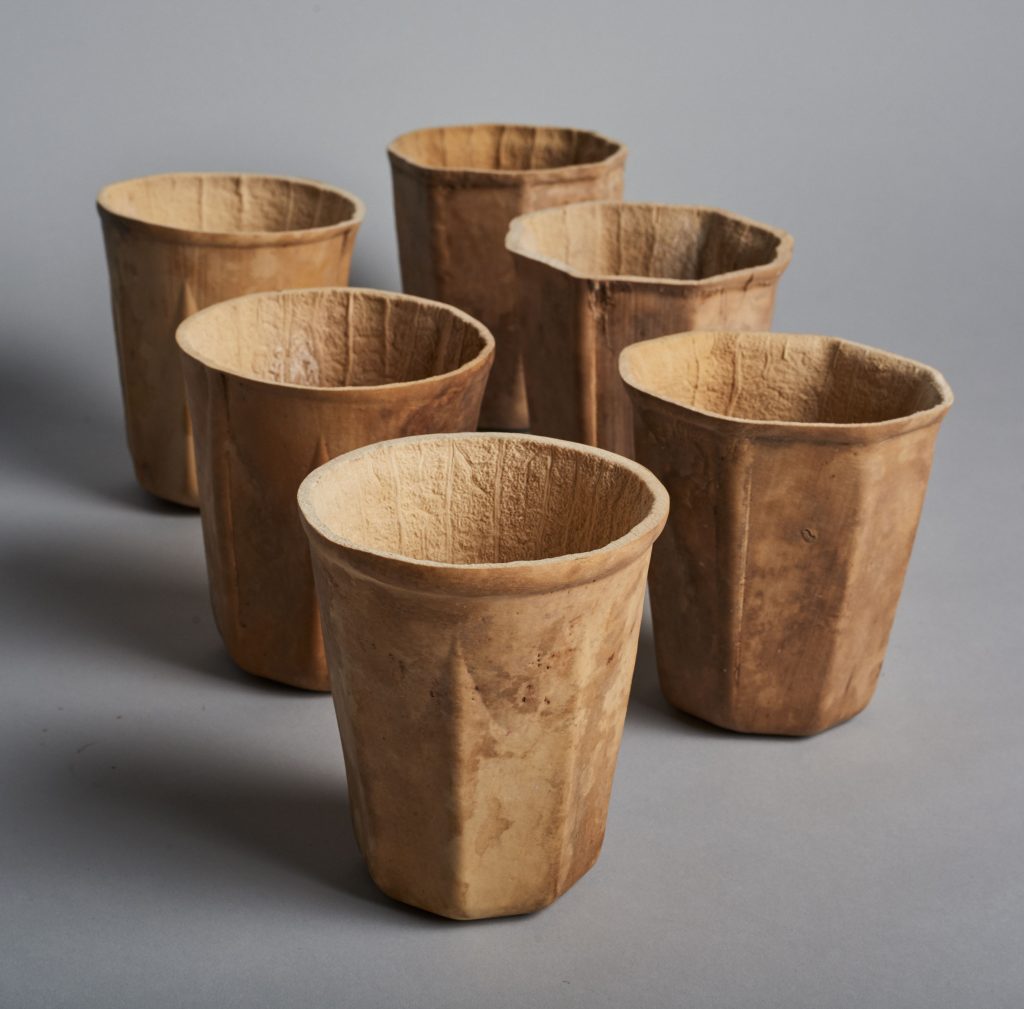
HyO-Cup by Crème (also header image)
Brooklyn-based design studio Crème led by Jun Aizaki offers their own sustainable alternative to disposable coffee cups made from homegrown vegetables. The team decided to turn to nature for a solution for the worldwide issue of take-away cups contaminating waterways and landscapes.
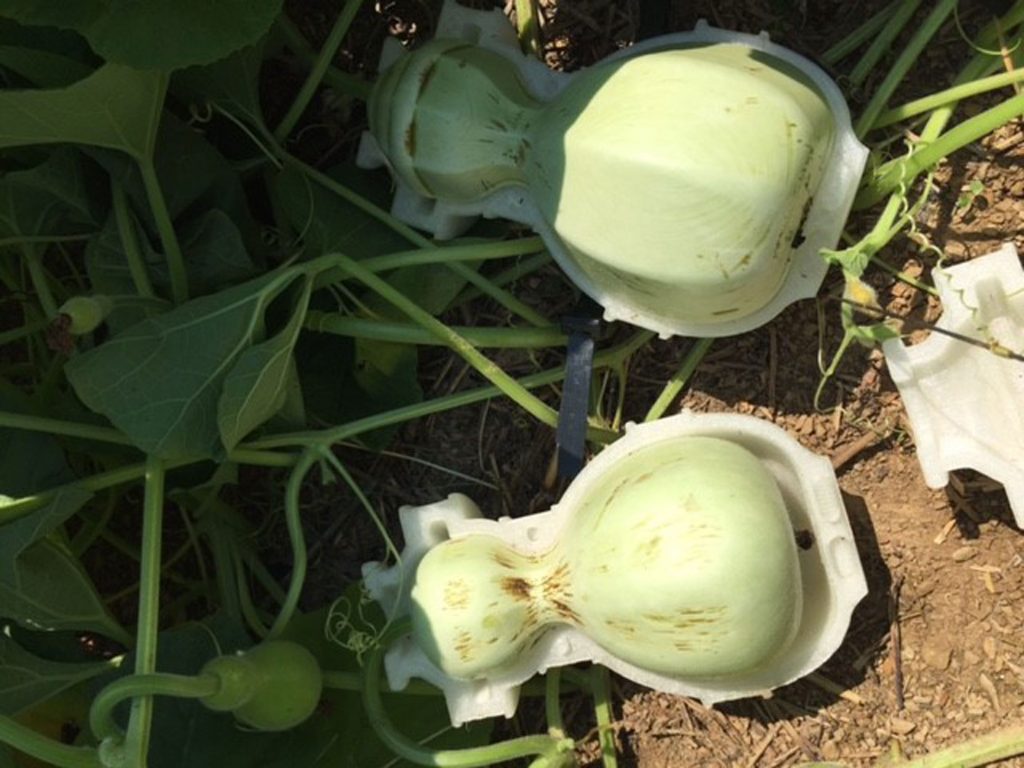
HyO-Cup by Crème
To make its compostable cups named HyO-Cup, the team uses the centuries-old practice of moulding gourds, fast-growing plants that bear robust fruit each season. Once dried, the gourds’ strong outer skin and fibrous inner flesh becomes watertight – so these crops can be used for centuries across the globe as decorative or functional vessels.
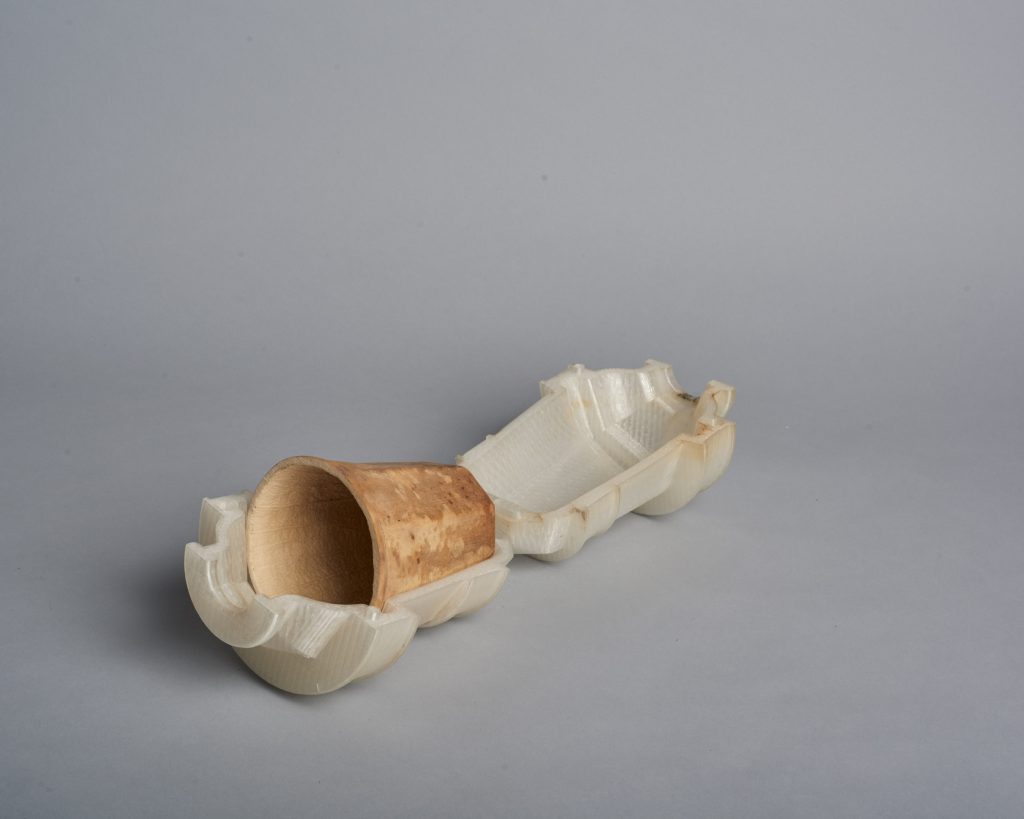
HyO-Cup by Crème
Using custom-designed 3D-printed moulds, the studio managed to develop a stackable set of cups that mimic the silhouette of a classic faceted glass cup. It claims that the cups can be manufactured on a mass scale, although there are certain complications to mass producing a consistent product with an organic material.
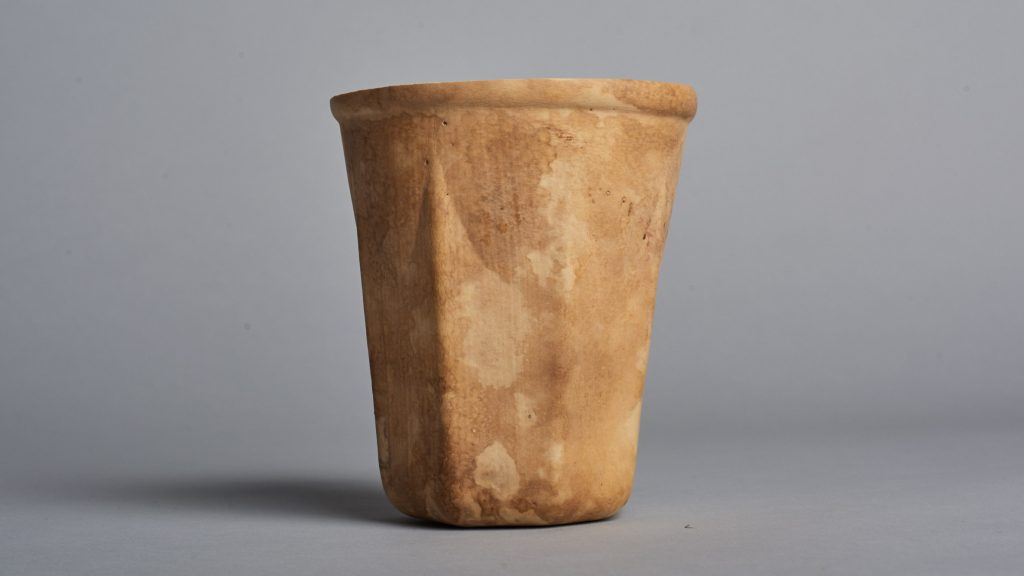

HyO-Cup by Crème
They started the experiment growing a few gourds outside in their backyard and eventually found a farm to take on a larger batch. Upon discovering that there were too many factors that could be controlled, such as humidity, pests, weather, and flooding, they are now growing them in a container laboratory set up in a shipping container.